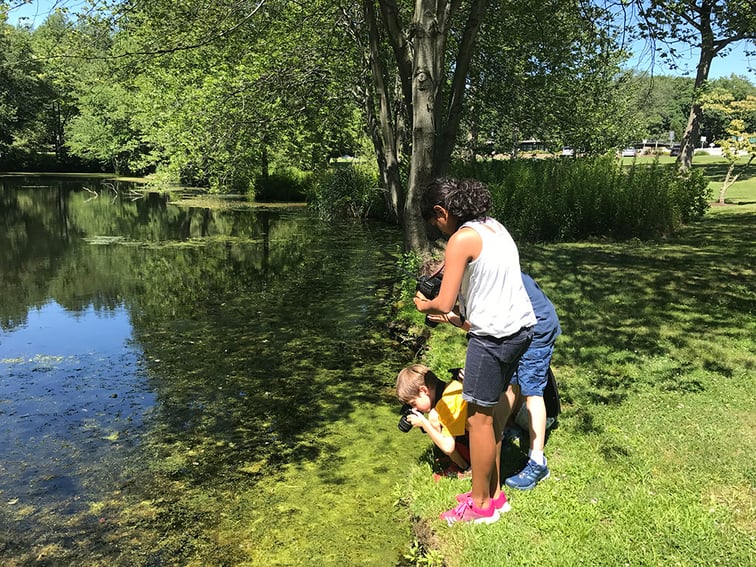"Do you want to teach photography during summer camp?"
"Uh. Okay."
That's really how it started. A simple question posed to me in passing by our summer camp director. I definitely enjoy taking photos in my role as content marketing coordinator at Whitby, but teaching photography for beginners over a weeklong workshop was a huge departure from my comfort zone. How do you teach photography to kids in five days? Where do you even begin? What do you focus on? How much is too much? What are they going to be capable of doing? Everyone learns differently, but here are some things that worked for me:
1. Start with Why
For any task or technology, it's important to learn why it's worthy of spending time to learn it in the first place. Why bother? Photography has had many uses since it was invented, including art, documenting history, recording the news, or simply for leisure. Show your students some examples of how photography is used other than for selfies. But then follow up with why they want to learn it.
2. Hit the basics
This means subject and composition. At the bare minimum, there needs to be something interesting in the picture. In this case, the word "interesting" takes on expanded meaning. While it might be more obvious that a beautiful landscape would make for a good photo, engaging imagery can sometimes be hidden in our everyday surroundings. It doesn't matter if you're an expert on shutter speed, aperture and ISO; learning how to frame a shot and develop a mind for composition is something all photographers of any skill level need. The Rule of Thirds is a great place to start.

3. Don't make assumptions
So when I say to start with the basics, I really do mean the basics. When we finally started using cameras on the first day of class, I made a rookie mistake. I assumed my students knew how to activate their cameras' autofocus. Even more, I thought they knew how to activate the shutter. Since it's second nature to me, I didn't even think about it. But soon enough, the questions came. "Mr. Aromin...why is it so blurry? How do I take a picture?" We promptly went over this after.
4. Let's get technical
I had a group of students who were about to enter the fourth and fifth grades. I wasn't sure if shooting in manual would work with this group, but it was worth a try. I introduced the concepts of shutter speed, aperture and ISO, and explained how all three work together to change how a picture looks. Through examples of actual photos, I showed how changing one setting affects the other two and how to adjust to compensate for those changes. My students immediately gravitated toward bokeh — or the blur in photos seen around a single in-focus subject. This was a good practical scenario to show how the relationship between the shutter speed, aperture and ISO achieves this look.

5. Practice makes perfect
While perfection can never truly be achieved, practice certainly does make for improvement. For the first four days of class, I dedicated a good chunk of class time for students to take photos. (Students spent the fifth day of class putting together photo books online.) We shot in different areas of the school including indoor locations such as classrooms and hallways to outdoor areas like our school's garden and pond. The differences in locations provided students challenges in changing the settings on their cameras to adjust to various lighting scenarios.
Conclusion
Practice also helps improve the ability to teach. While I've worked with students before, this was a completely new challenge. Our class sessions spanned five days and were each two hours and forty-five minutes long. Much like adjusting a camera's settings for different environments, I had to adjust my teaching and agenda based on how I read the class. If that meant changing the order of activities I had or eliminating something completely, so be it.
That said, what I've listed in this post shouldn't be taken as rules of thumb but as suggestions that can be altered to meet the needs of you and your students. Each photographer has their own style and every teacher does, too.


